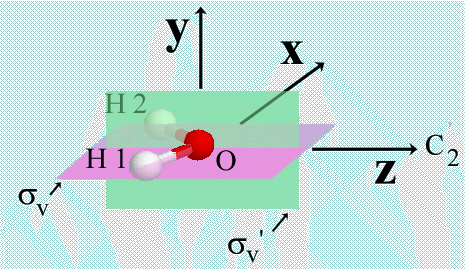|
As was implicit above, the consecutive application of two symmetry operations may be represented algebraically by the product of the individual operations. Let us explore the multiplication of symmetry operations further, taking as a practical example, the symmetry of the water molecule as illustrated below. |
|
|
|
| A proper rotation by 180° about the z-axis (C2) results in the interchange of the two hydrogen atoms; successive rotation by 180° returns the molecule to its original configuration and so we can write: | |
|
C2 x C2 = C22 = E
|
|
|
The operation of reflection across the mirror
plane yz {i.e. |
|
|
|
